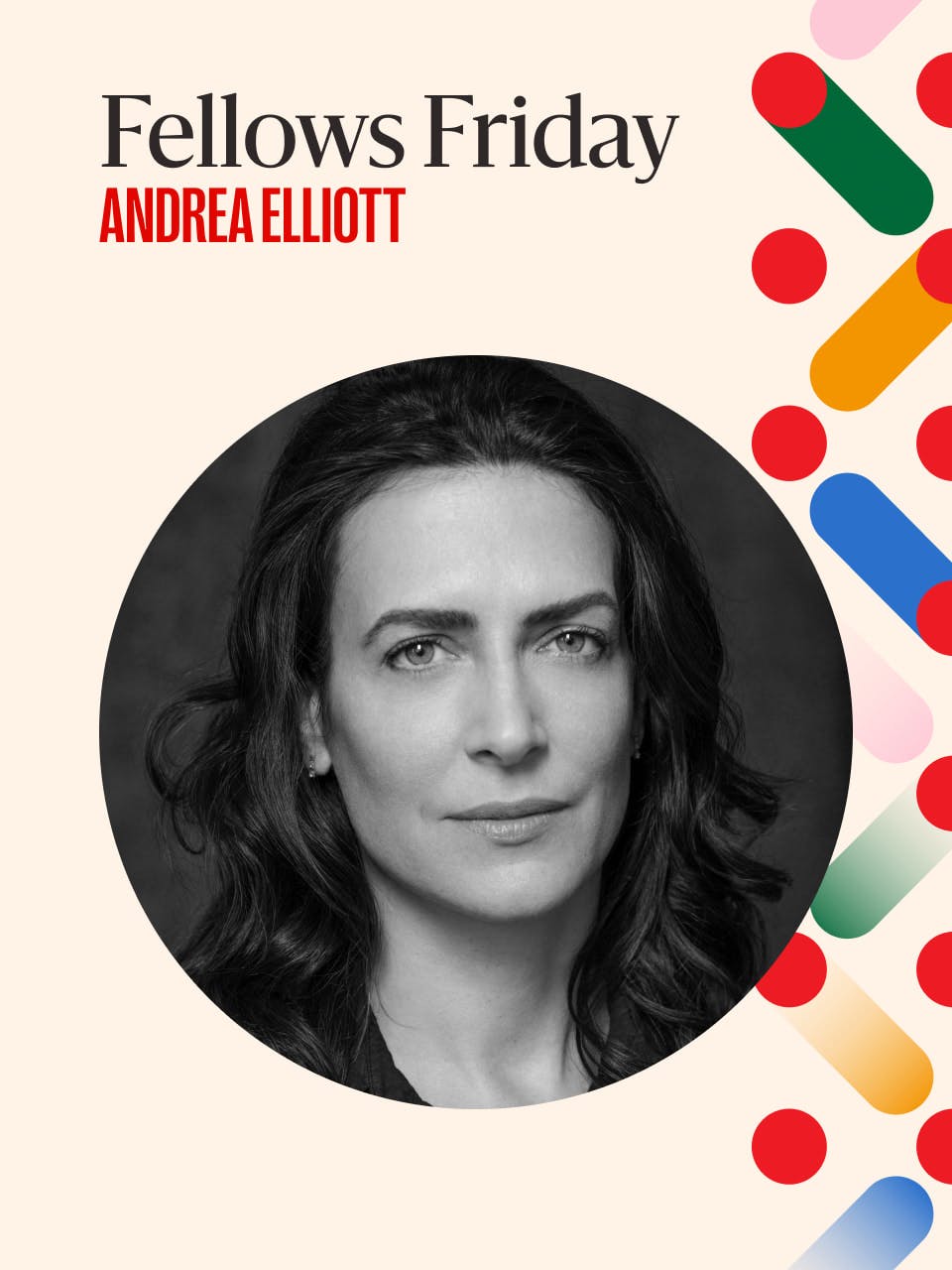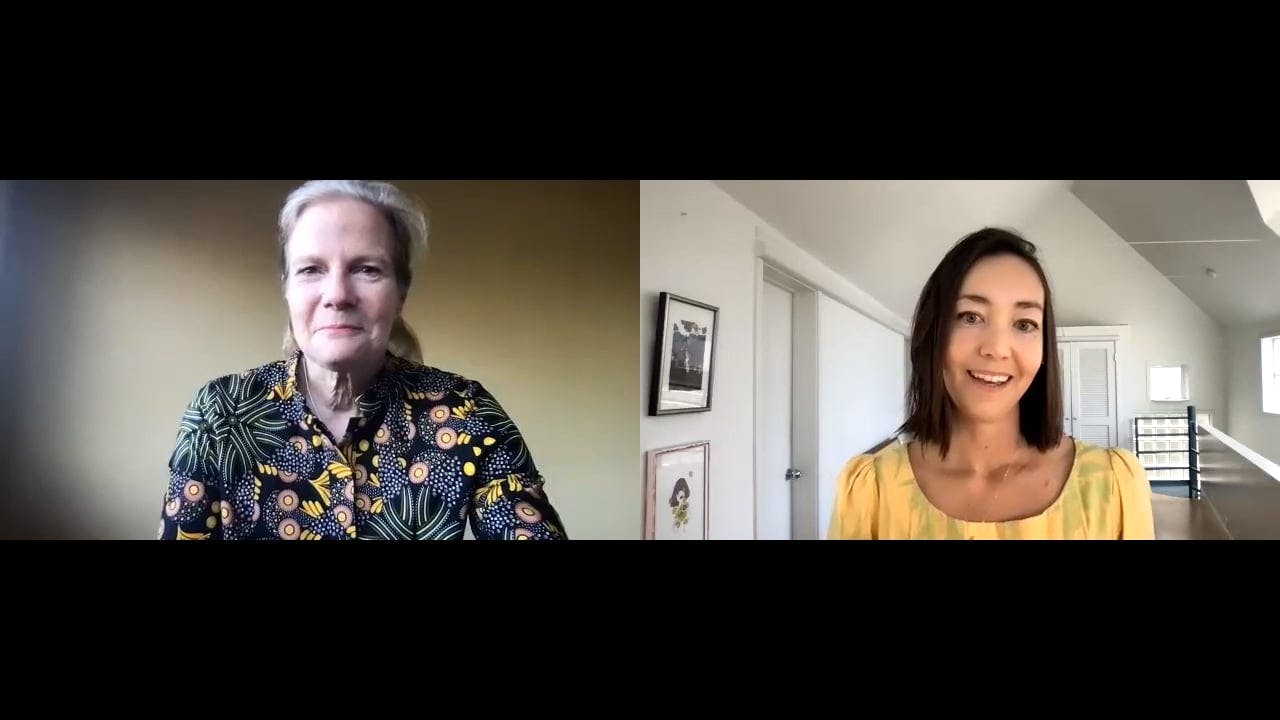
‘Invisible Child’ chronicles a young life shaped by homelessness
58 min watch
Joan Salwen has a long family connection to cows. Four generations, in fact: her father, grandfather, and great-grandfather all raised cattle and other livestock on a 100-acre farm in rural Iowa, which remains in the family to this day. “My grandfather was a remarkable man,” she says. “He was an incredible problem solver on the farm—resilient, resourceful, and with a great love for his livestock. He was an inspiration to me.”
So it’s only natural that Salwen would, at some point in her career, end up back in the family business. Sort of. Today, Salwen, an Emerson Collective Dial Fellow, works at the intersection of cattle and climate change. Her company, Blue Ocean Barns, is on a mission to solve the global climate impact of cattle by working with farmers and food companies to commercialize and scale the production of an unusual feed ingredient that reduces methane emissions from cow burps: seaweed.
Salwen joined Elemental Excelerator Chief of Staff Melissa Uhl for a Fellows Friday conversation about seaweed, cows, climate change, corporate leadership, and farming.

FELLOWS FRIDAY SERIES: Entrepreneur and Dial Fellow Joan Salwen describes a feed supplement that, when fed to cattle, reduces methane emissions from cow burps by over 80%.
Cattle are remarkable creatures. They have a very unique digestive system that allows them to take really crummy, worthless grass and convert it into incredibly complex and complete proteins. That conversion process, unfortunately, results in about a 12% energy loss for the animal through gassy burps. The nutritional waste that comes out of burps not only costs farmers money, because there's less take-up of energy from the feed, but contributes the equivalent of two billion tons of CO2 emissions every year in the form of methane— which is more than 4% of all greenhouse gas emissions globally.
In fact, the global emissions of all cows surpasses the global emissions from all vehicles on the road. Think about it this way: the emissions from one productive dairy cow in California is equivalent to the emissions from one passenger car. We have 1.5 billion cattle on the planet, and we have 100 million such animals here in the United States alone. It's a very large problem and there has been no available technology at all to address it. In 2016, I had an opportunity to work with Stanford faculty and interdisciplinary centers to really start looking at how this problem might be solved, and that was really the beginning of Blue Ocean Barns.
We have created a product that is really the most effective burp suppressant for cows that's ever been devised. It's a 100% natural solution. What we do is grow a particular kind of seaweed, Asparagopsis, that while it's growing in the ocean—or in our case, in tanks—synthesizes a bunch of compounds, one of which has been known for quite a long time to interrupt the chemical reaction in cows that results in methane gas.
When fed to cows, this seaweed can reduce methane emissions from each cow by 80%. And it's very natural. The biome remains completely intact, but it does the job of stopping the methane gas production, freeing up hydrogen and carbon that would otherwise be bound together and spit out as a really potent greenhouse gas to instead produce sugars and other nutrients. So all sorts of wonderful natural consequences flow from the fact that the cow is making food rather than making gas.
A star cow named Dallas had 95% reductions of her methane! And she loved the stuff, she could not get enough of the Asparagopsis.
It was just an enormously exciting moment when, last fall, the California Department of Food and Agriculture agreed with us that this additive was ready to be put out into a commercial setting and we were able to leave the university and go onto a commercial farm and work with real farmers.
The real partner on this work was the farmer who owned the farm and who let us in a very natural setting. And that man is Albert Straus, one of my personal heroes, who runs Straus Family Creamery. He has set the impossible goal of having a zero carbon dairy, and he is absolutely on track to achieve it, in part thanks to this additive. We started a proof of concept as a demonstration and test in June of last year with 60 of his cows. Thirty of them ate their regular diet only, and 30 others ate their regular diet plus a sprinkling of this seaweed. We were able to see not only a match of the carbon reductions that we had seen experimentally at UC Davis, but in several cases, we actually saw greater reductions. A star cow named Dallas had 95% reductions of her methane! And she loved the stuff, she could not get enough of the Asparagopsis.
This was a lot of fun, but importantly, it demonstrated both to the state of California and to the farm community that this is easy to implement on your farm. It is just one more ingredient that gets mixed with the ration just like rolled corn or amino acids or alfalfa.
One of the things that we know to be true—and this also came from my relationship with my father and grandfather—is that farmers really like learning from other farmers, not from folks from outside. So our go-to-market strategy with our corporate customers is to begin with one farm. And that farm is a demonstration farm, where the farmer agrees to be in a position where she can invite folks from around the county to come and visit, hold the seaweed in their own hands, smell it, taste it, see the cows, look at the farmer's log of milk production, and then become an evangelist for other farmers.
Many fewer people drink milk than used to, and there are now alternatives coming out for not only milk, but also yogurt and cheese and whatever. Farmers feel they need to get ahead of that, and that sustainability would be an important part of that story. So that's number one.
Number two, they see the writing on the wall that at some point, and in some geographies in the world, governments are going to get very involved in curbing methane emissions within their borders. And these dairy producers would rather provide leadership and reduce emissions at a pace that makes sense for their industry than respond to government regulation.
This seaweed grows naturally and natively in Hawaii, and also in Southern California, in Baja, California, in oceans all over the world. But when it grows in the wild, it grows in a fern-like shape, and you can only have one layer of these ferns in the ocean. We take a more vertical approach. In our farm design, we're growing on land, in tanks. Growing on land has a lot of advantages. We harvest continuously—and by continuously, I mean every second. We are constantly making room for more growth in our tanks. And our tanks are tall, so that instead of having just a single layer of production, we can grow through the entire water column, which is vital.
As a result, we will be able to grow enough Asparagopsis to satisfy all 100 million cows in the United States on a parcel of land that would be the size of half of O'Hare Airport. It's not like we have to take over the whole ocean or take over all the coastline. It's 4,000 acres—which is about the size of many farms and ranches in Colorado.
As you well know, there is a long history of people coming to Hawaii and saying, “I have a crop I'd like to grow here,” and kind of just taking a lot from the islands. We really recognize that this particular limu belongs here, and we want to grow it in a way that honors the place and the people who have been a part of making Hawaii what it is today.
Our first priority is to grow it in a way that does not interrupt the local ecosystem or standing stocks of Asparagopsis. And secondly, we really want to build a company in which Hawaiians are an important part. We’ve partnered with a number of schools and nonprofit organizations, and in our Hawaii nursery, 25% of our folks are either Native Hawaiian or have children who are attending Hawaiian language schools and have long ties to Hawaii. As we build the company, we are also really looking to share equity with our employees, whether they're from Hawaii or not. Every single one of our full-time employees are stockholders in our company. And that will continue forever.